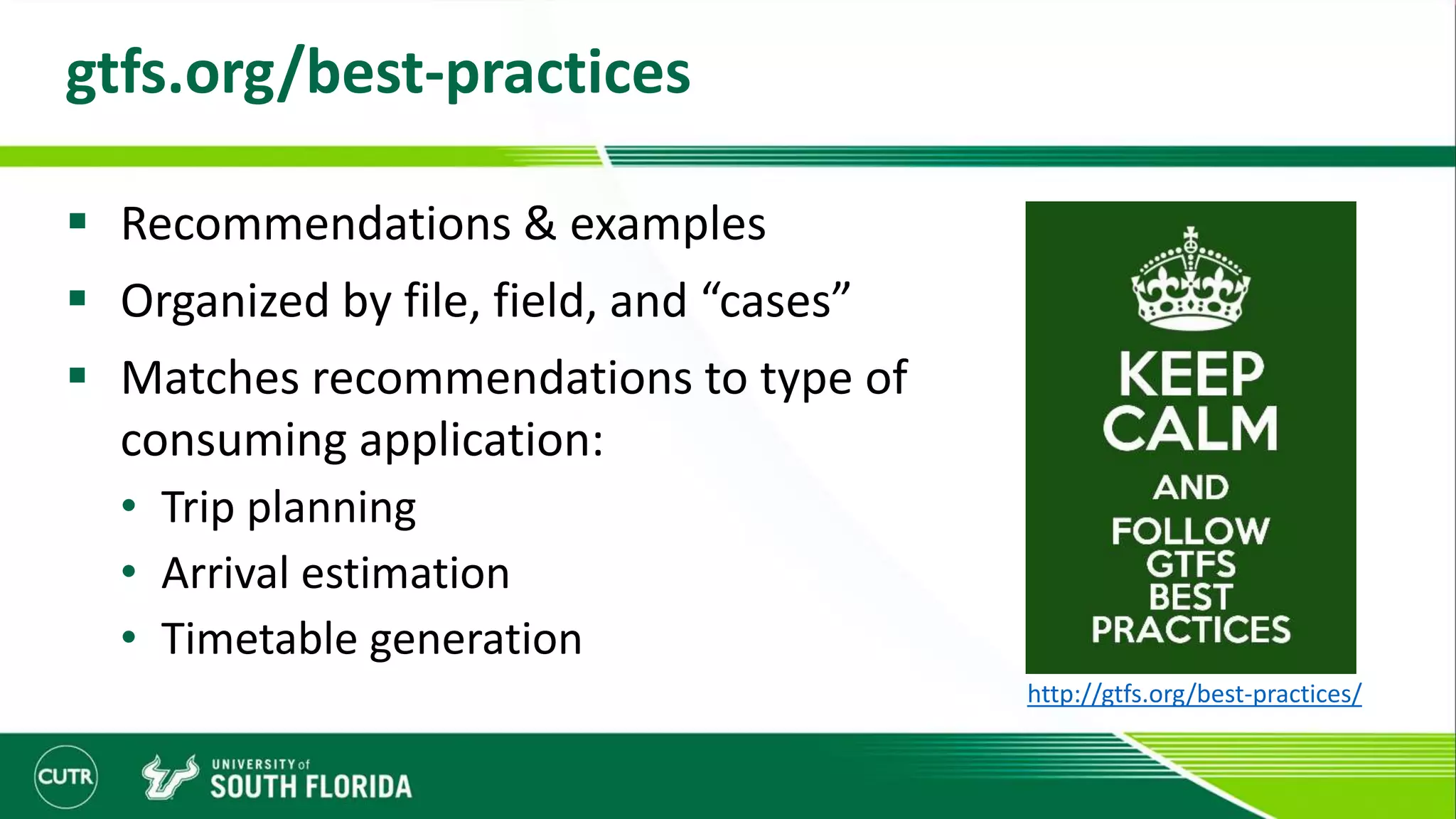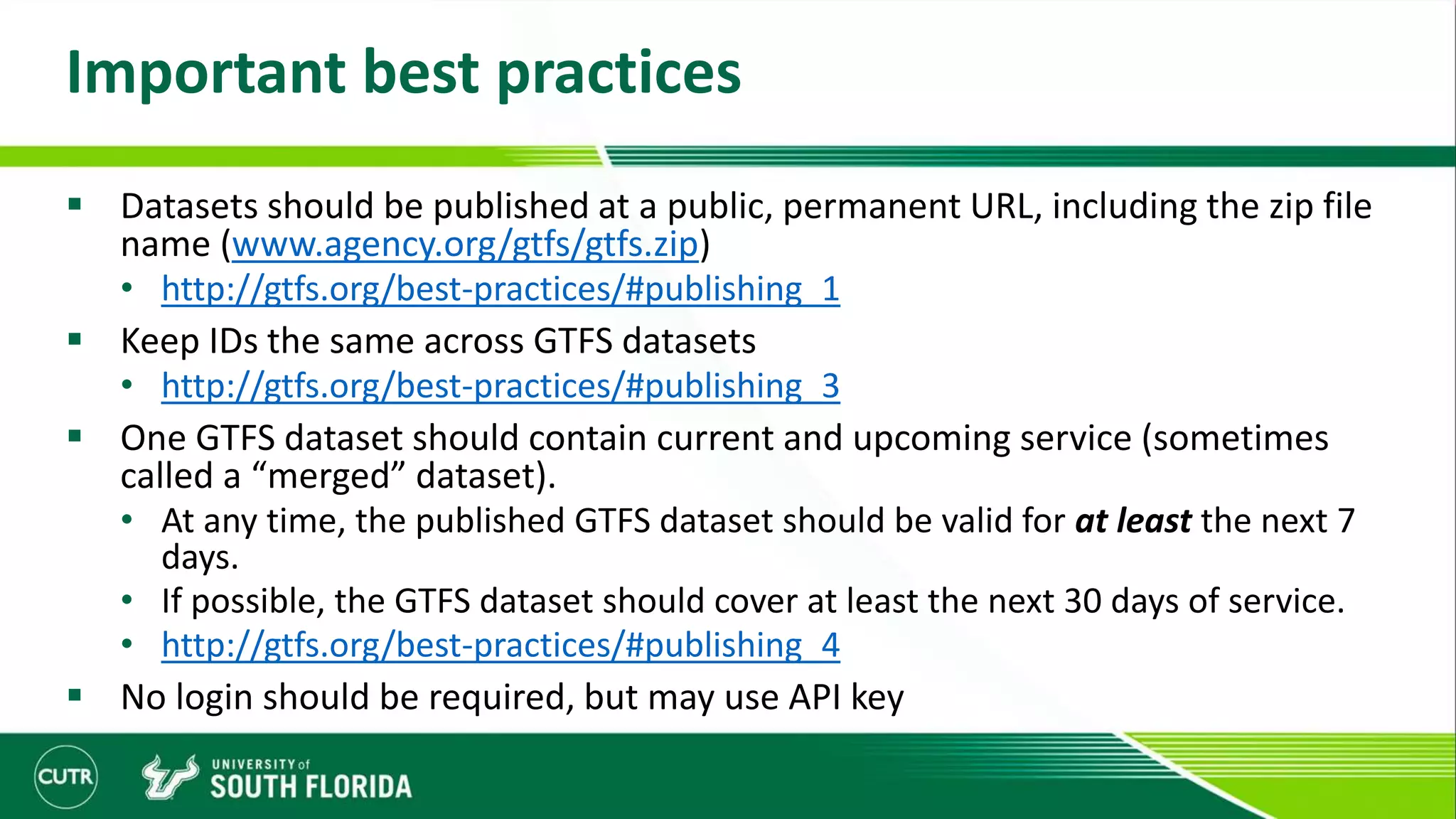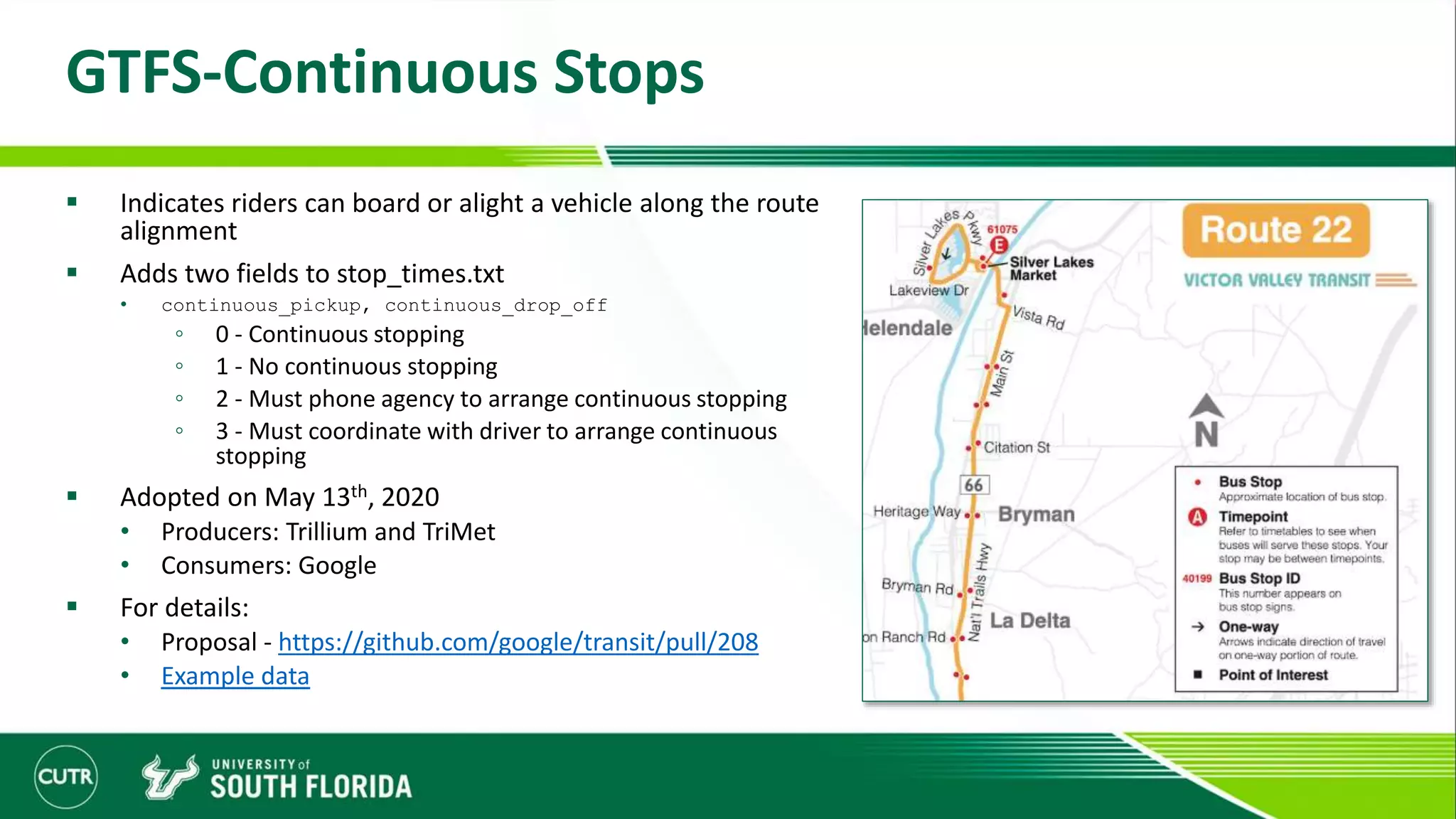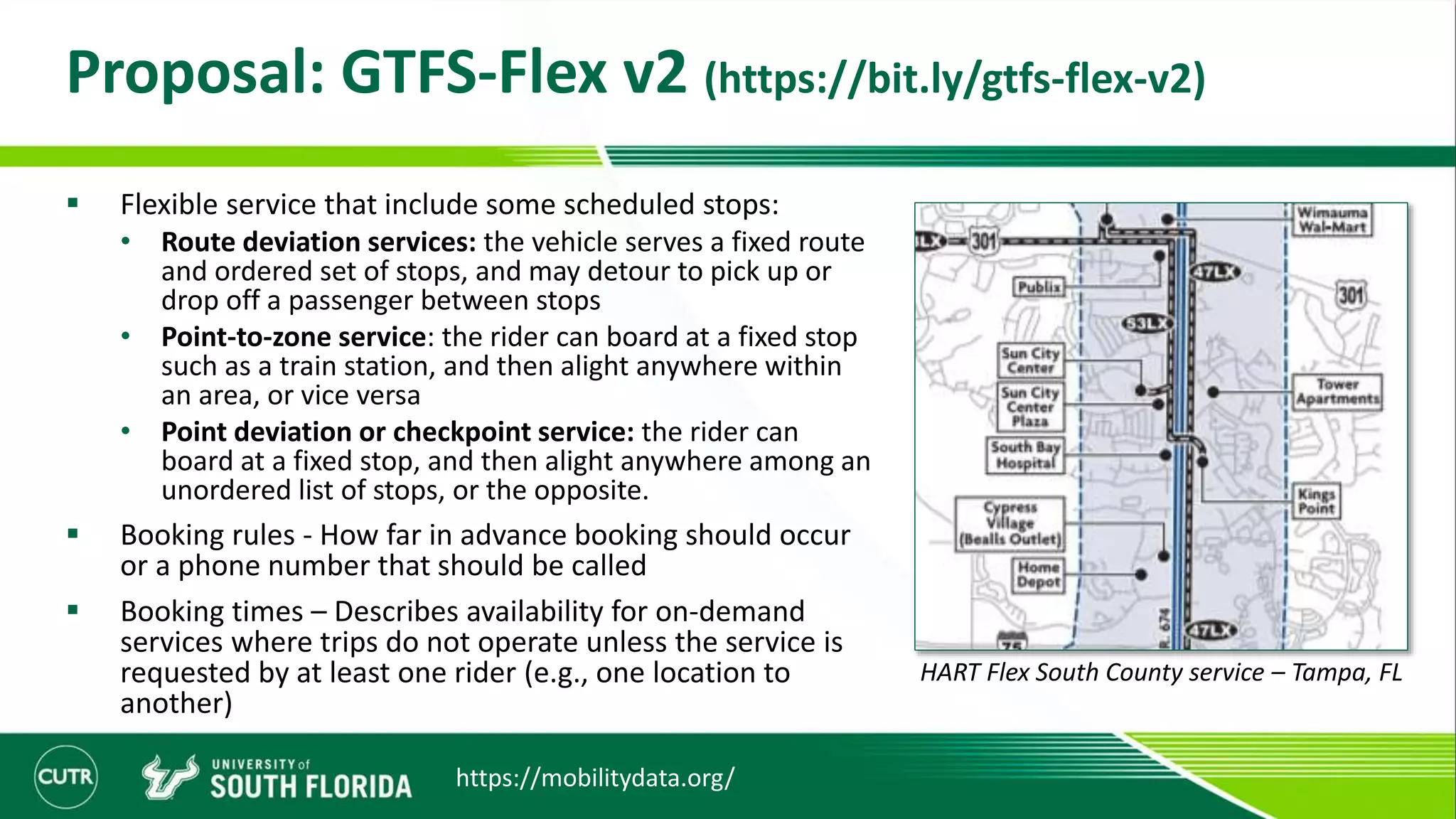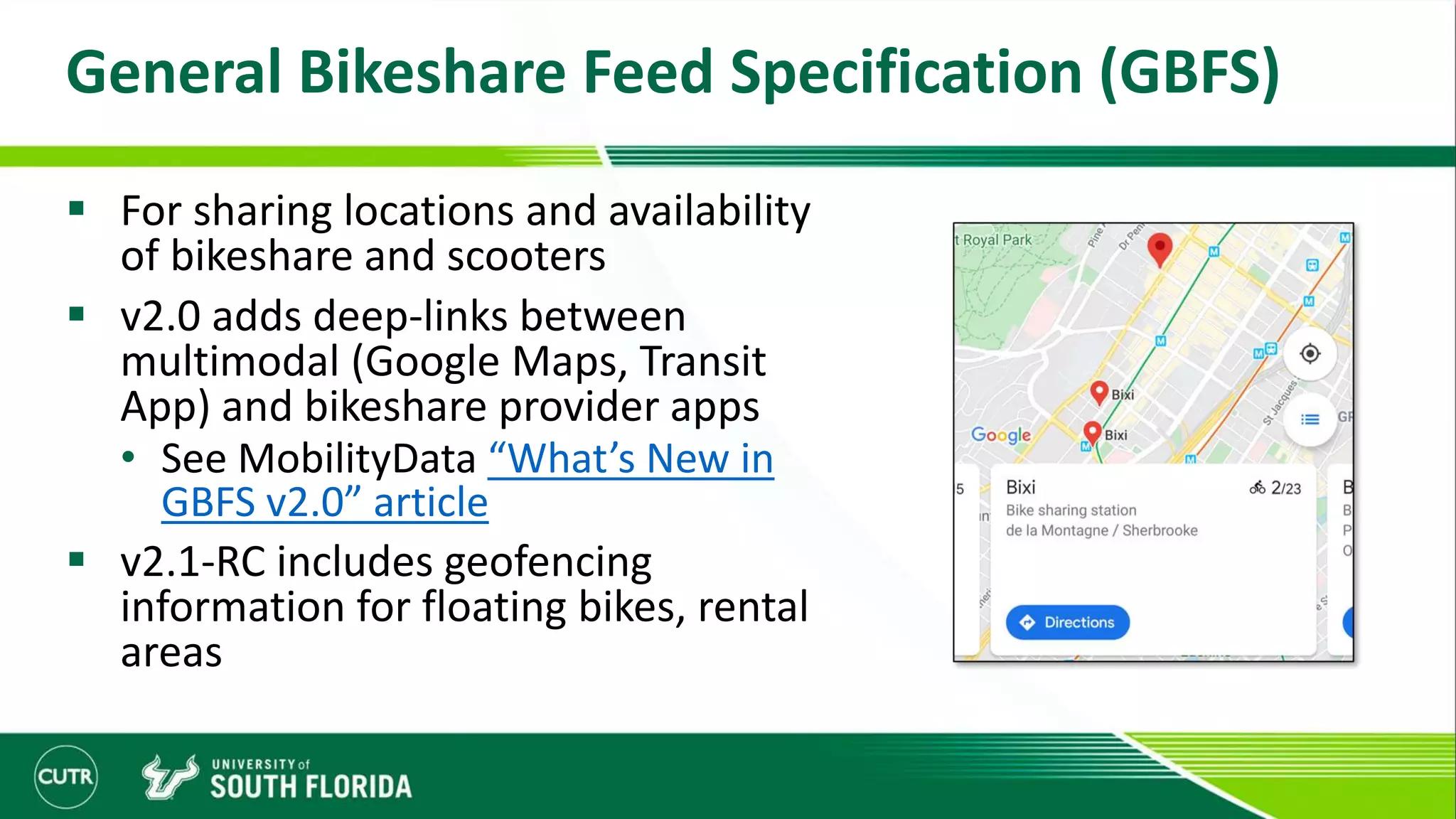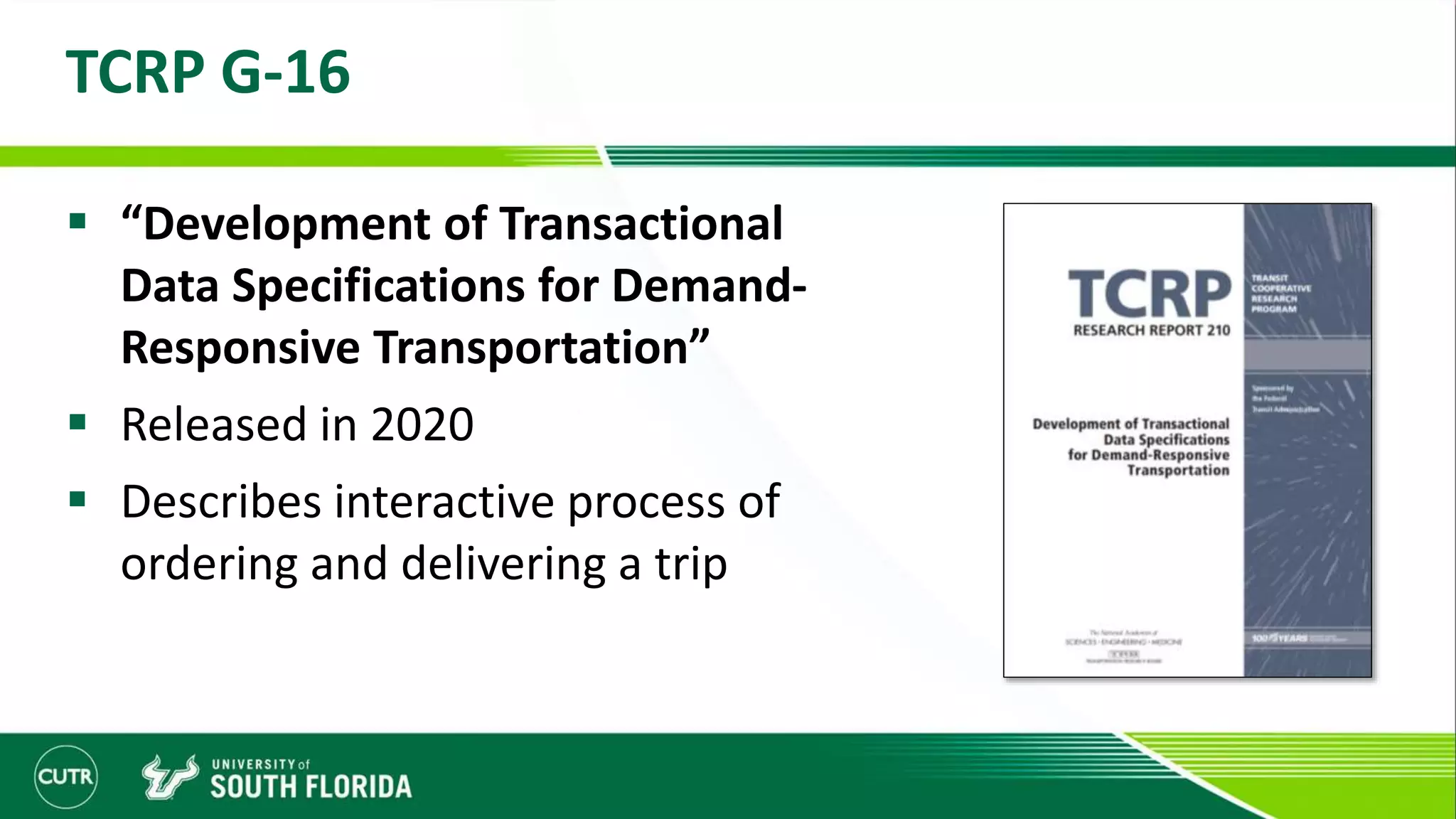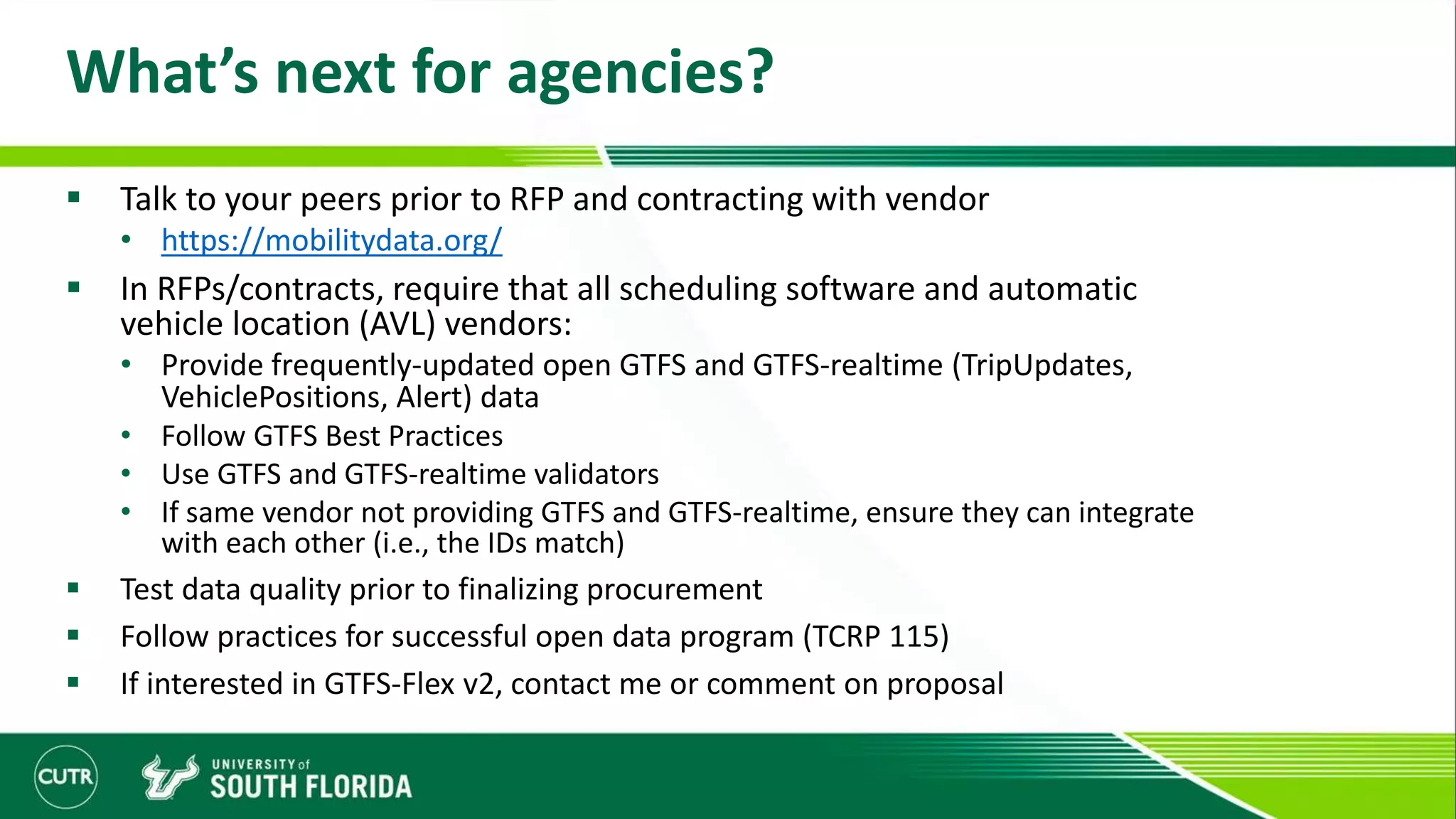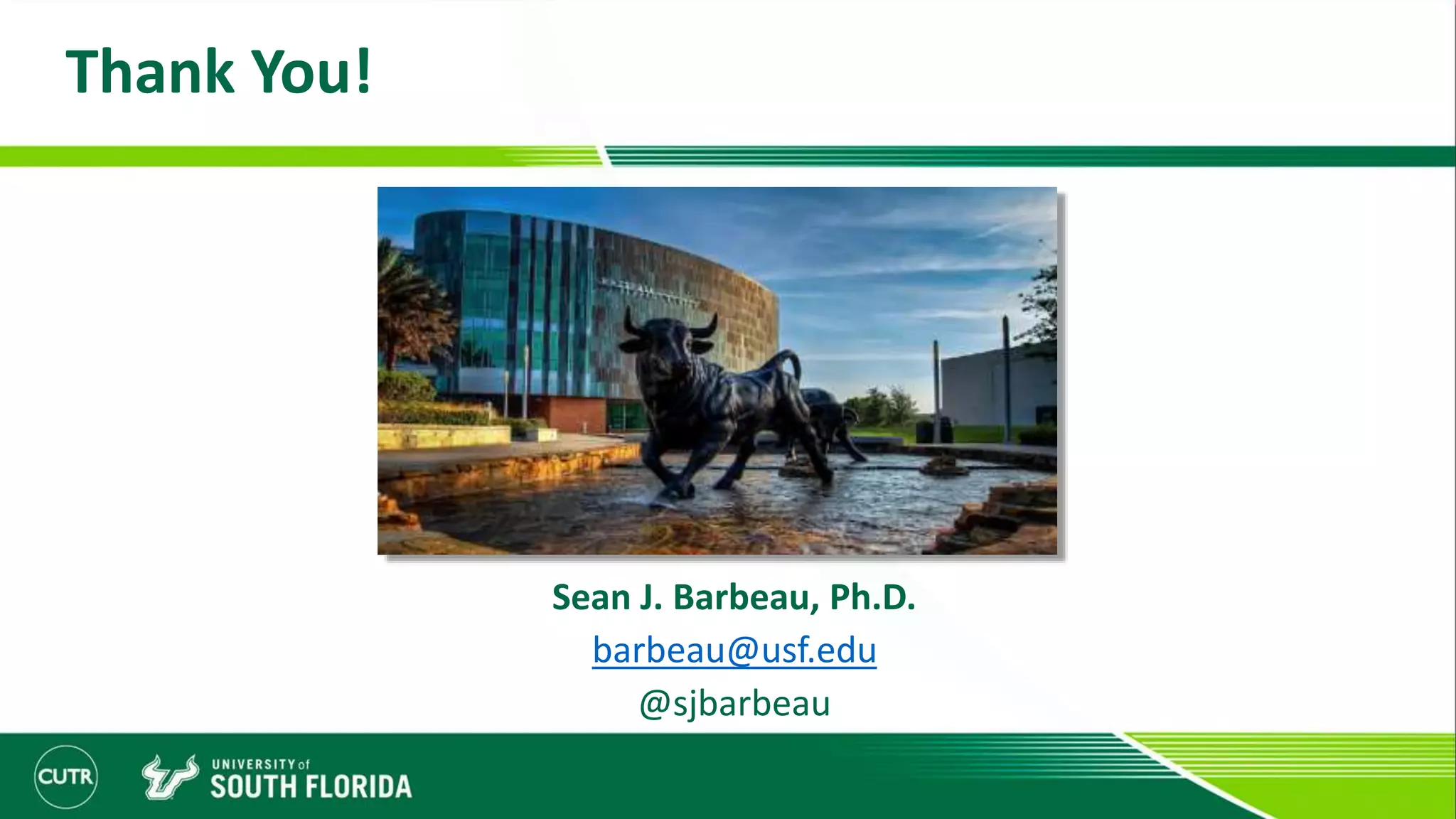The document discusses the importance and benefits of open transit data, emphasizing how it promotes innovation, transparency, and efficiency for transit agencies. It highlights the need for successful open data programs focusing on managing support, resources, data accuracy, and ongoing communication with developers and customers. The document also details various data formats like GTFS and GTFS-realtime, providing guidelines for best practices in publishing and maintaining transit data.
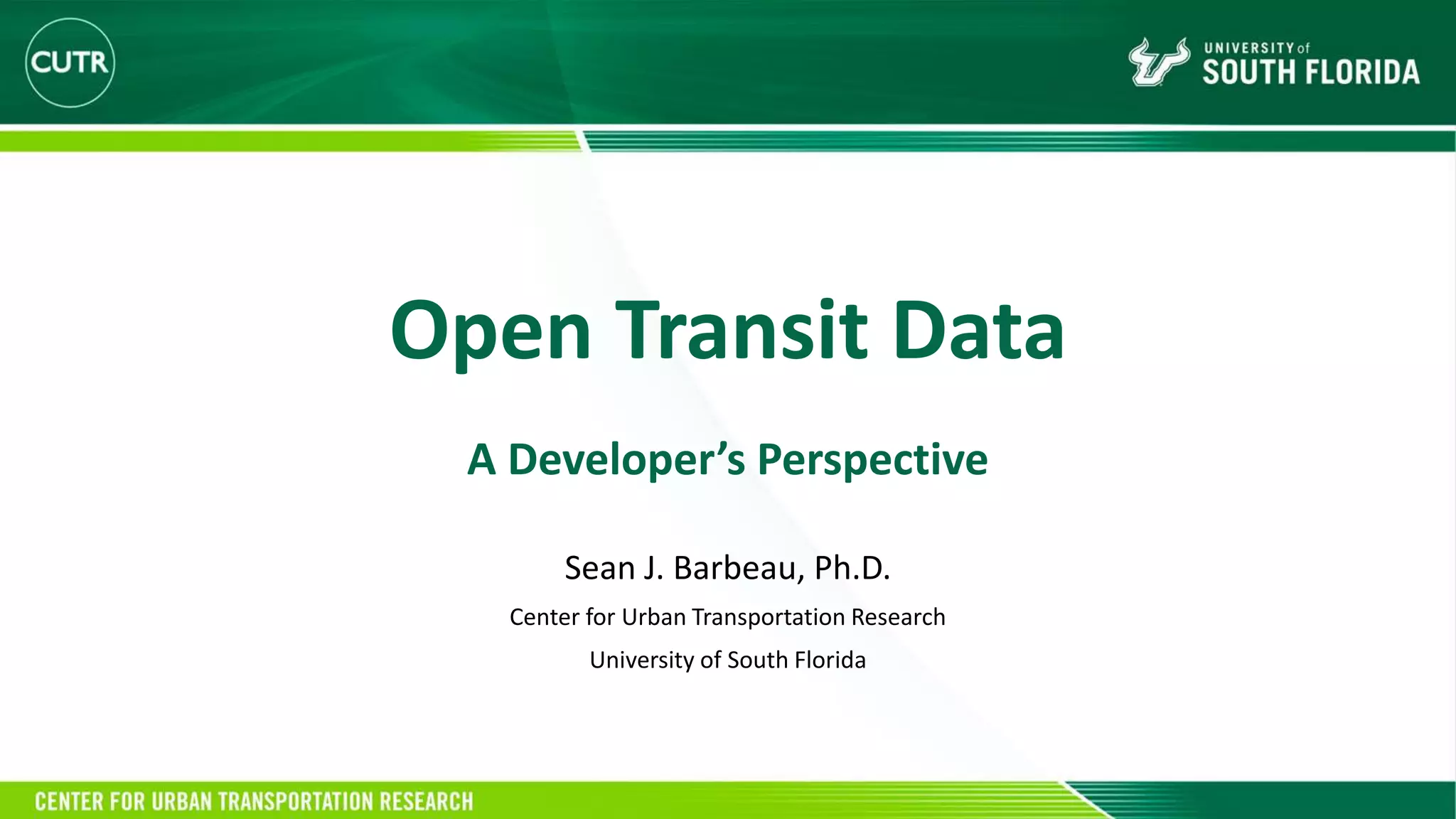
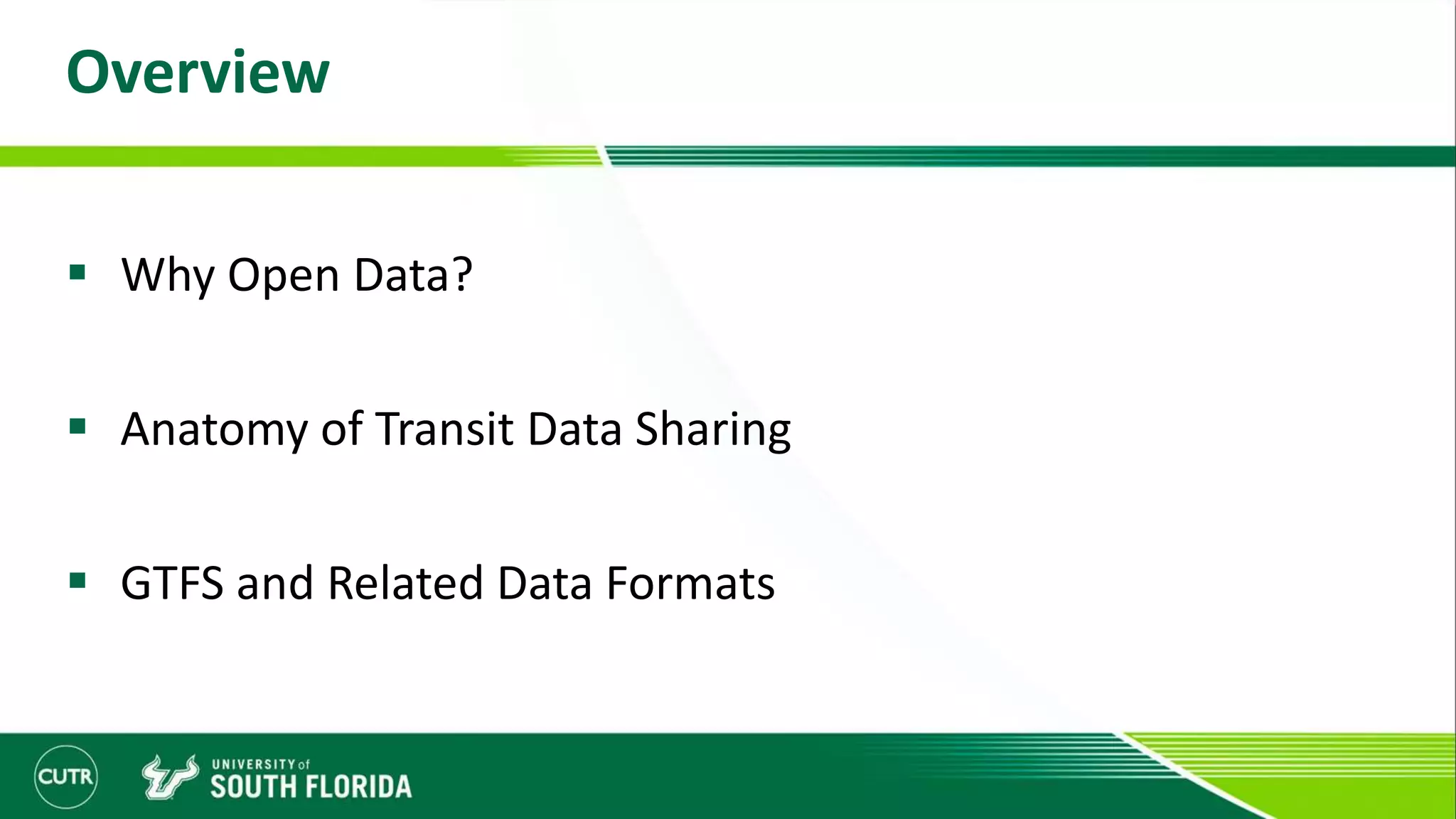
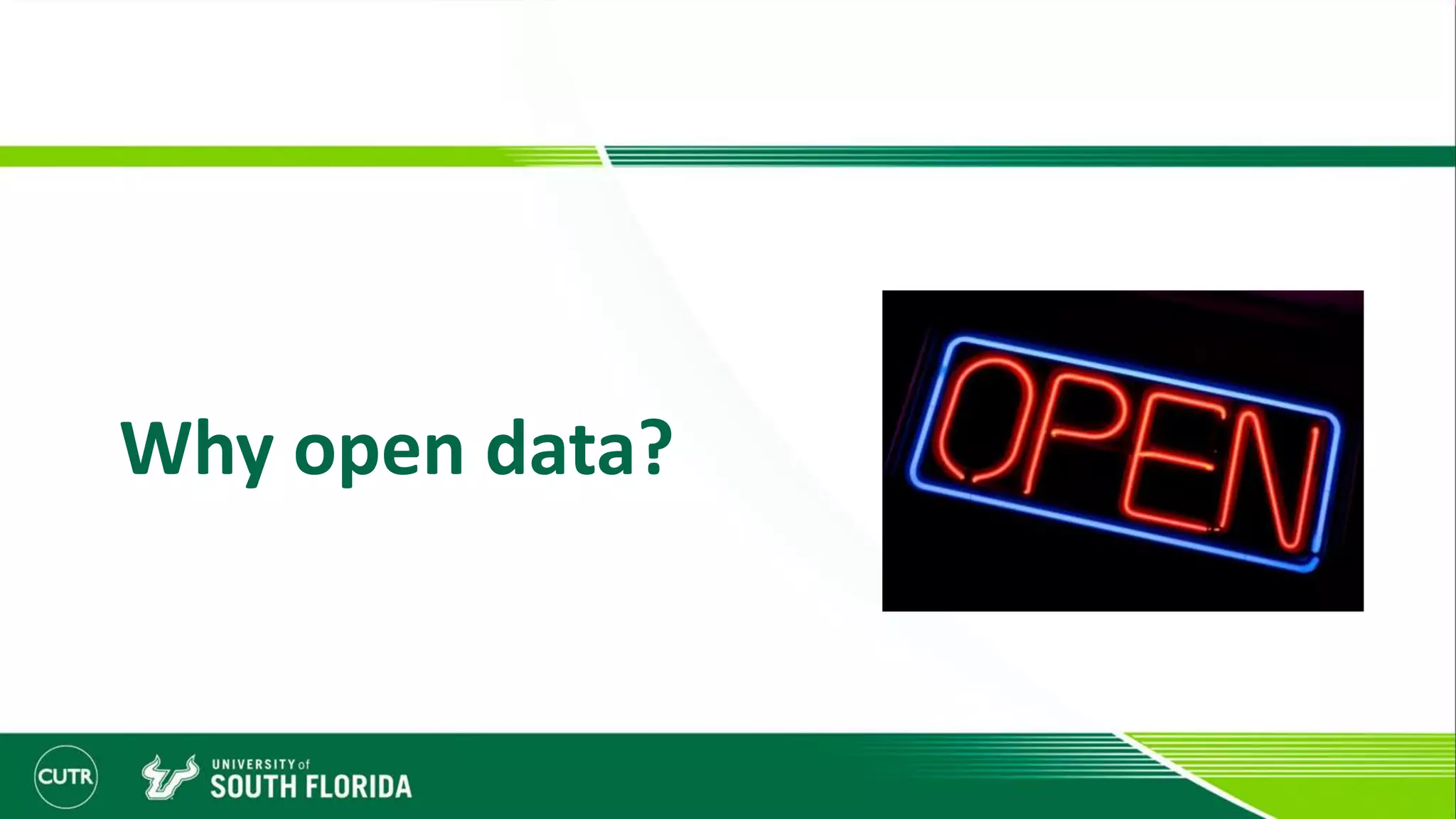
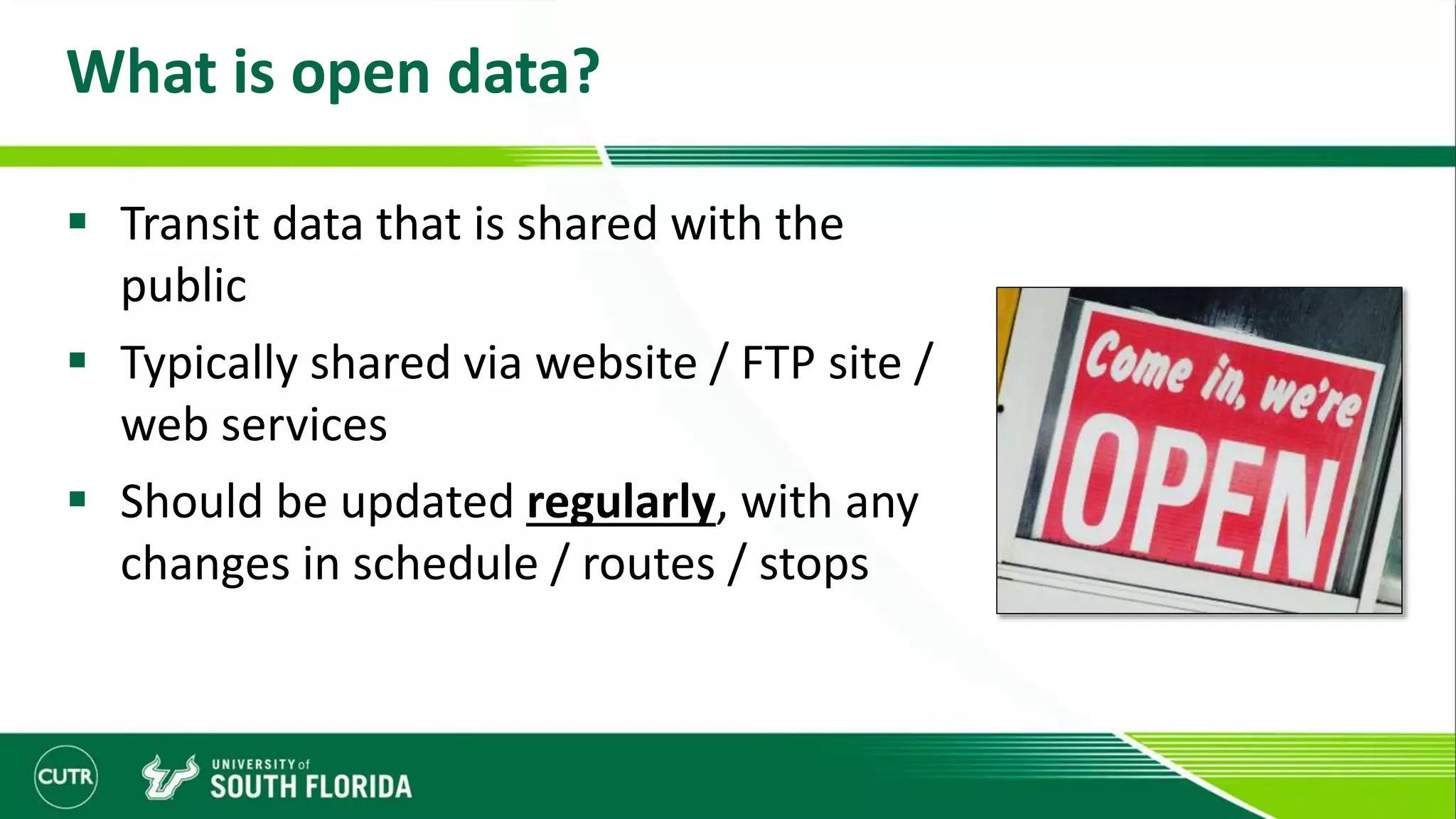
![Open [Data Architecture Source]
Open architectures mostly focus on:
• Standards within an agency’s software/hardware systems
• Interconnectivity with other government systems
Open source means software source code is available
Open data is the sharing of data with external public parties
3rd party
developers
OPEN DATA
Transit Agency
Transit Vehicle AVL Server
Schedule System](https://image.slidesharecdn.com/barbeau-n-cattwebinar-opentransitdata-v2-200528194119/75/Open-Transit-Data-A-Developer-s-Perspective-5-2048.jpg)
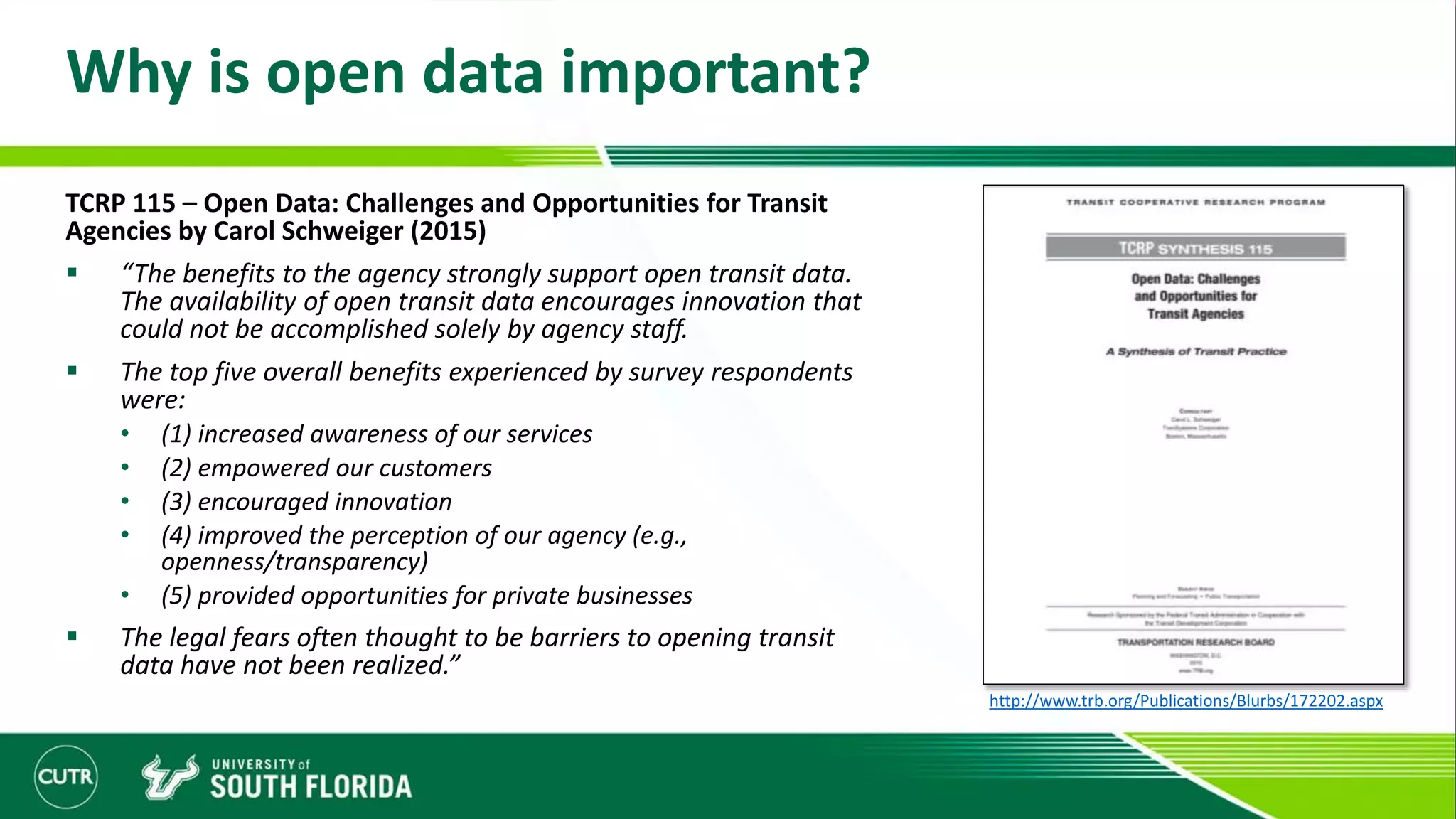
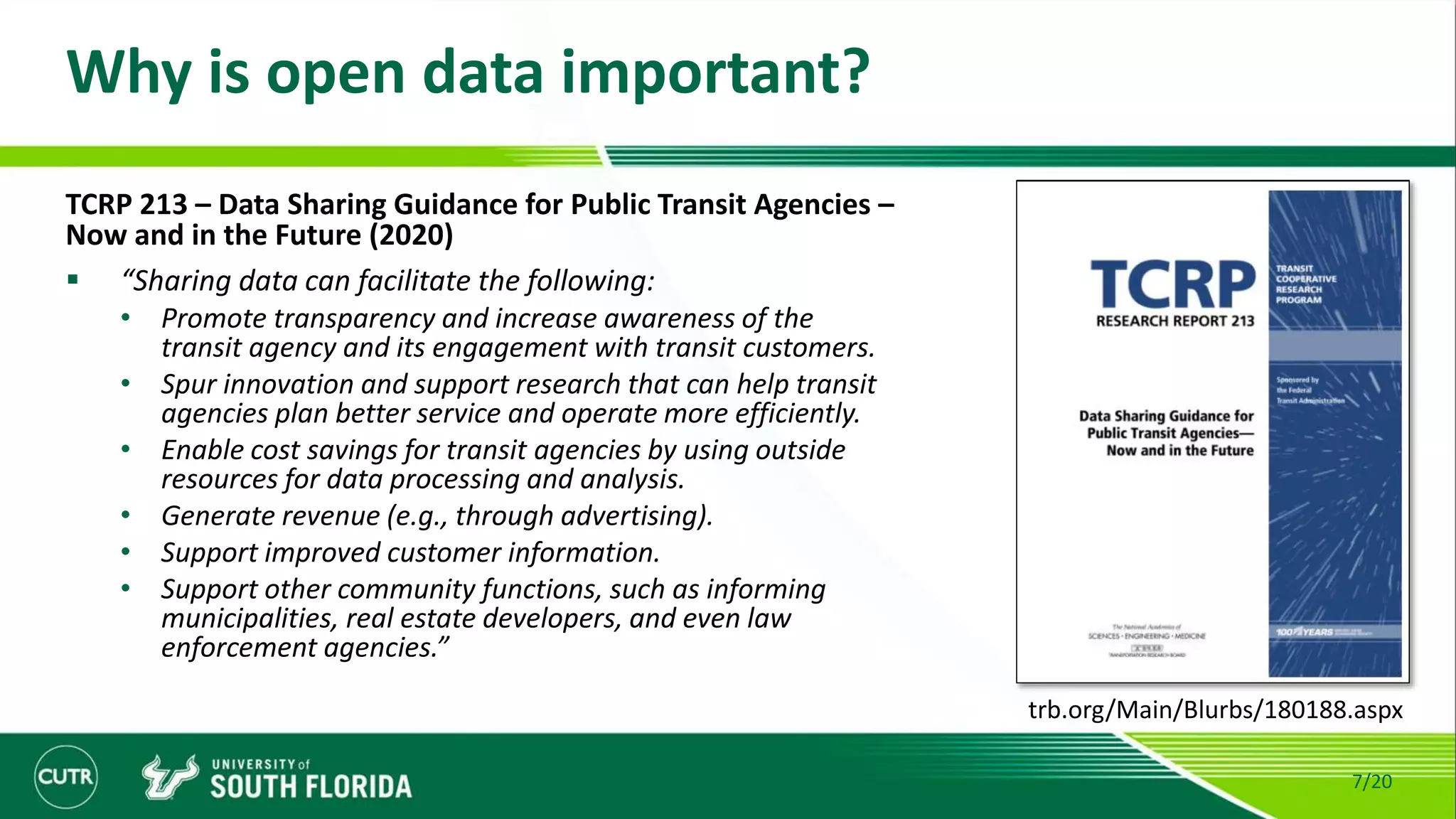
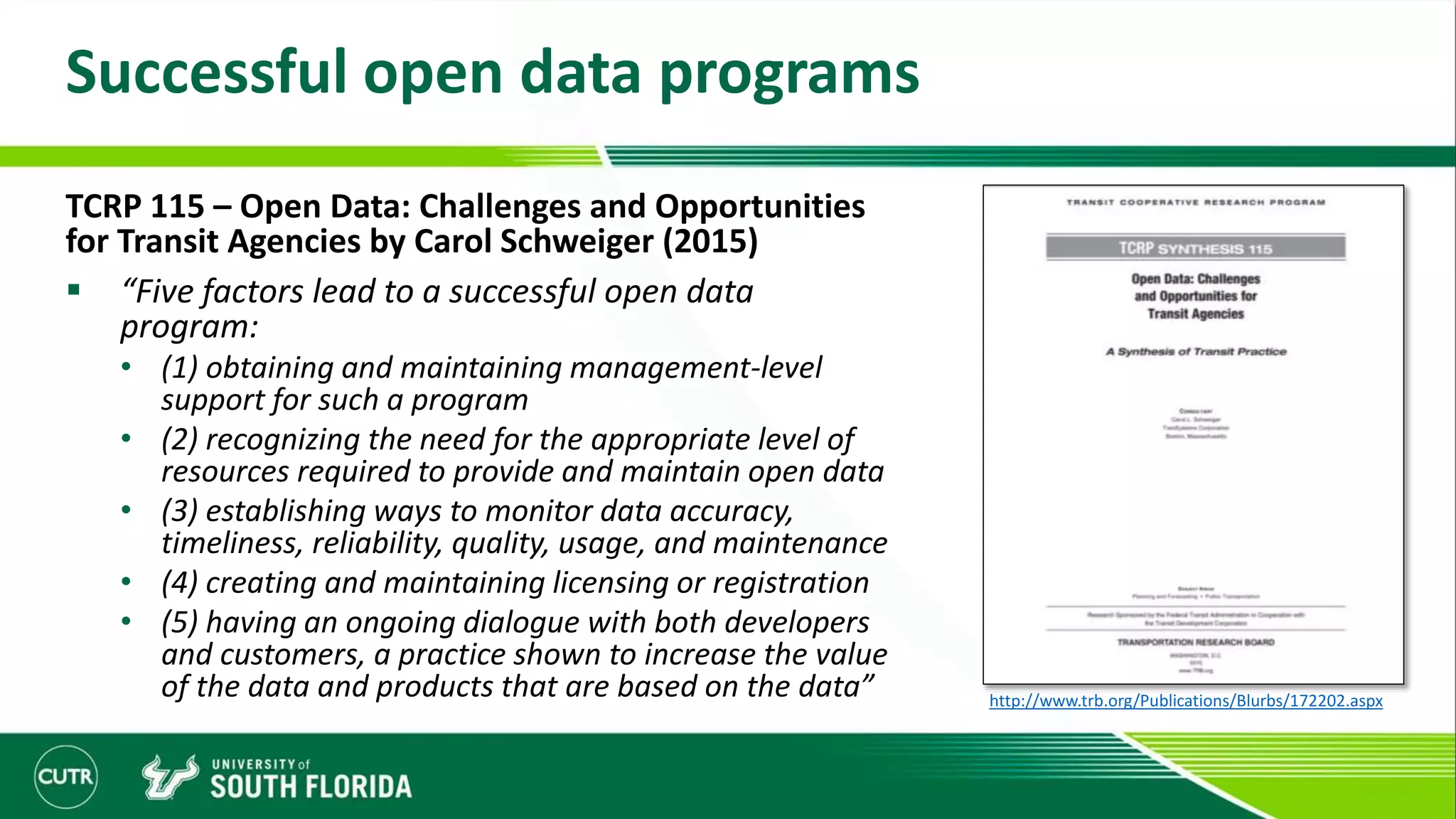
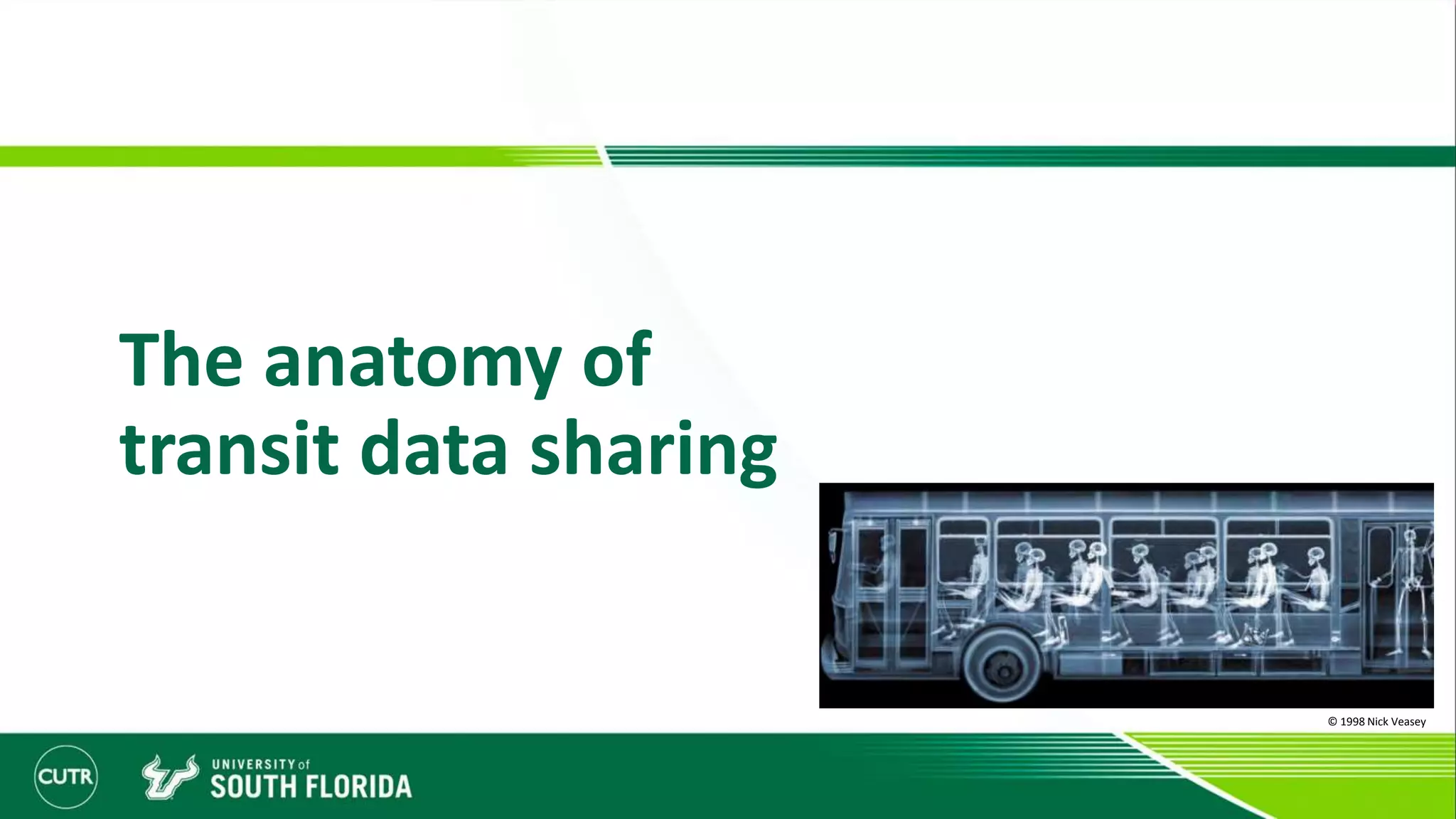
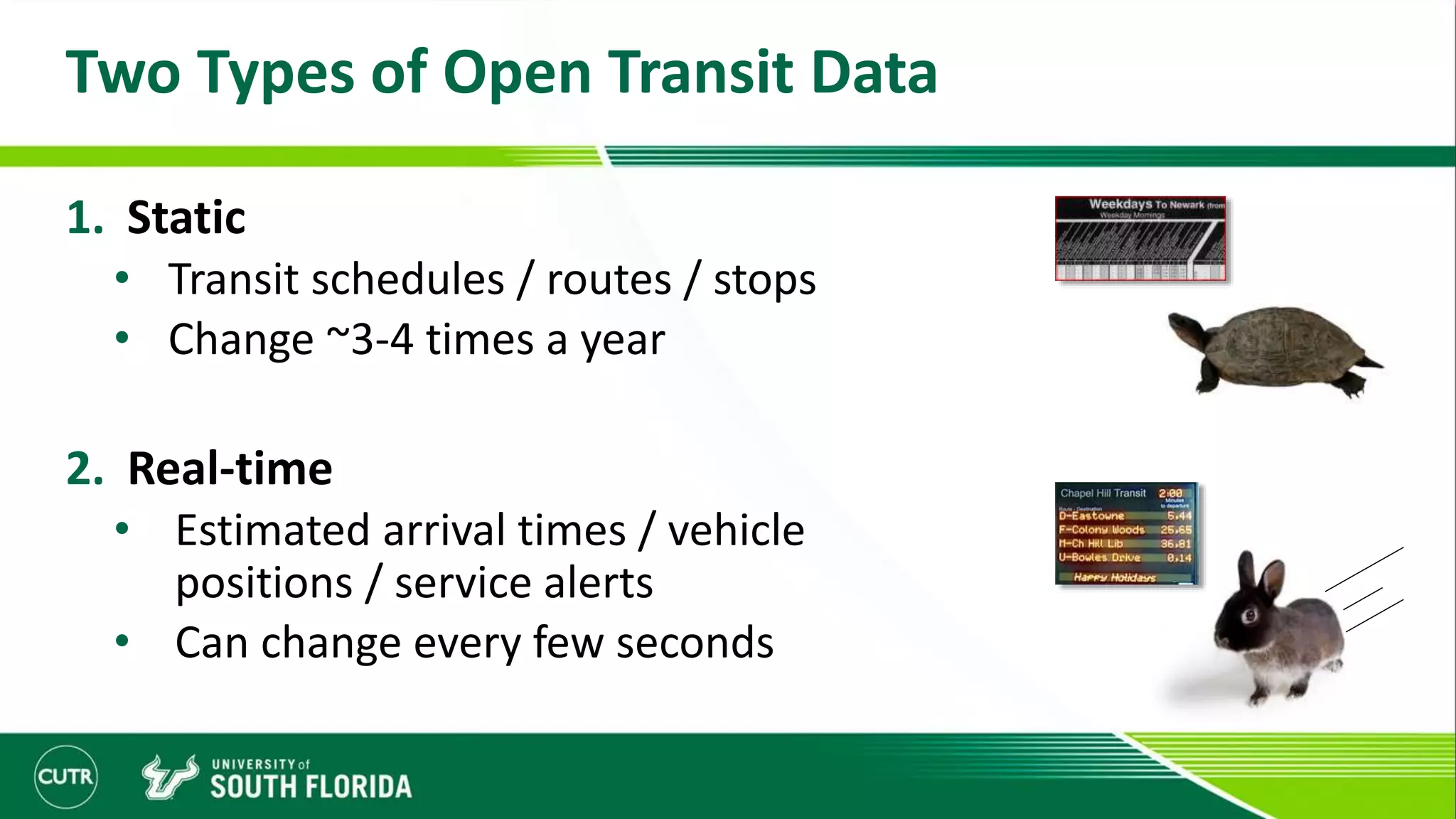
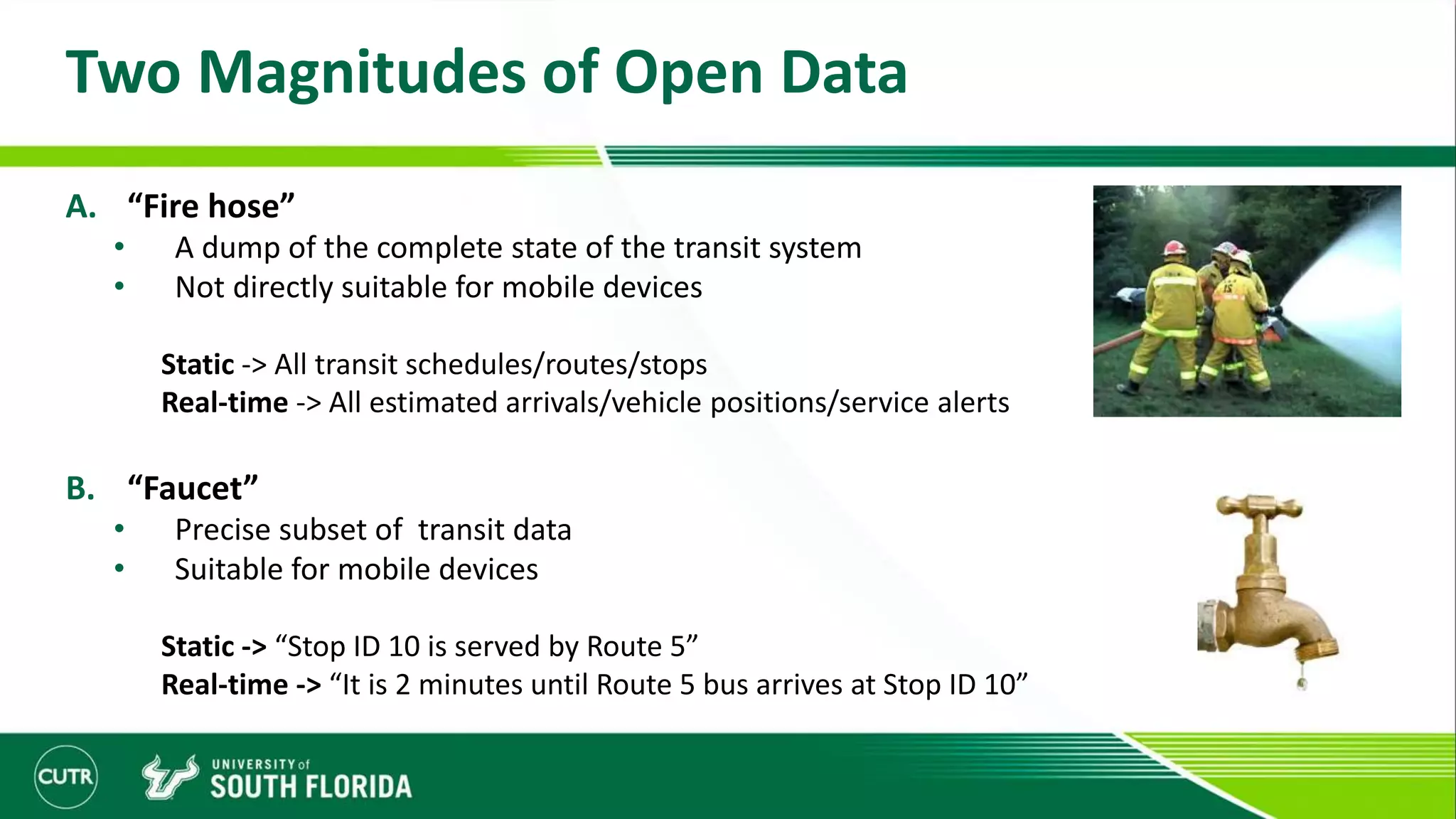
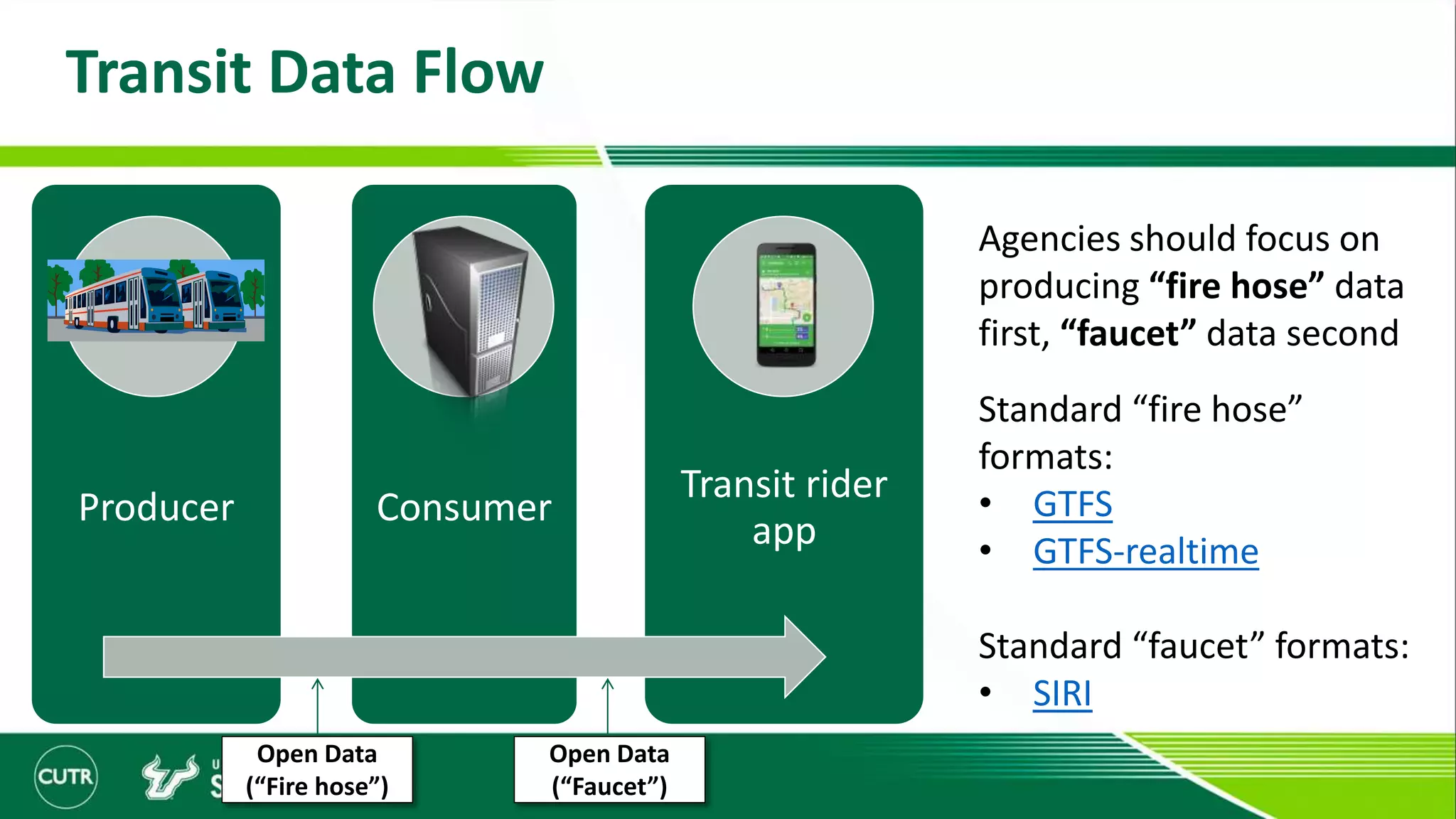
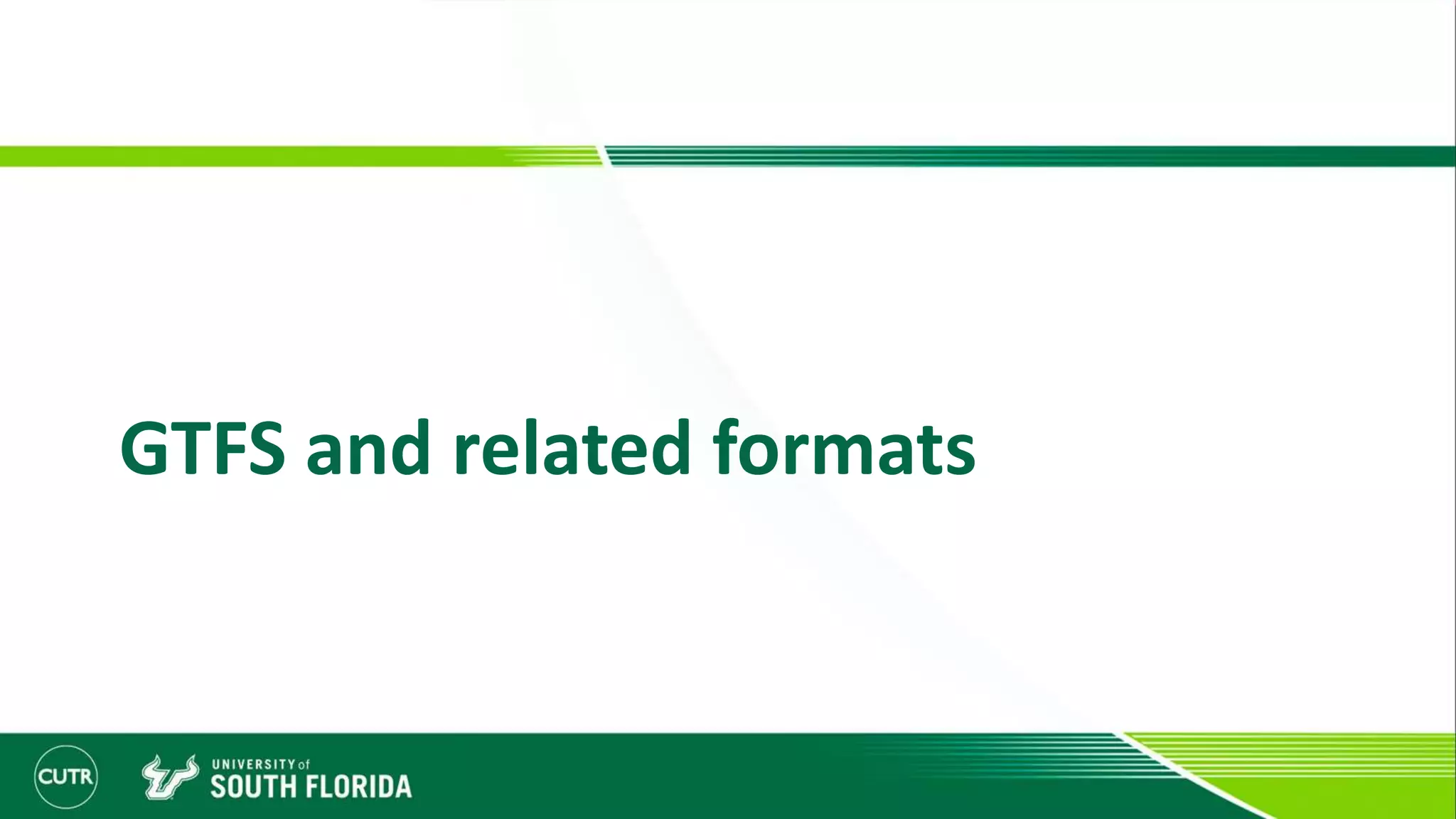
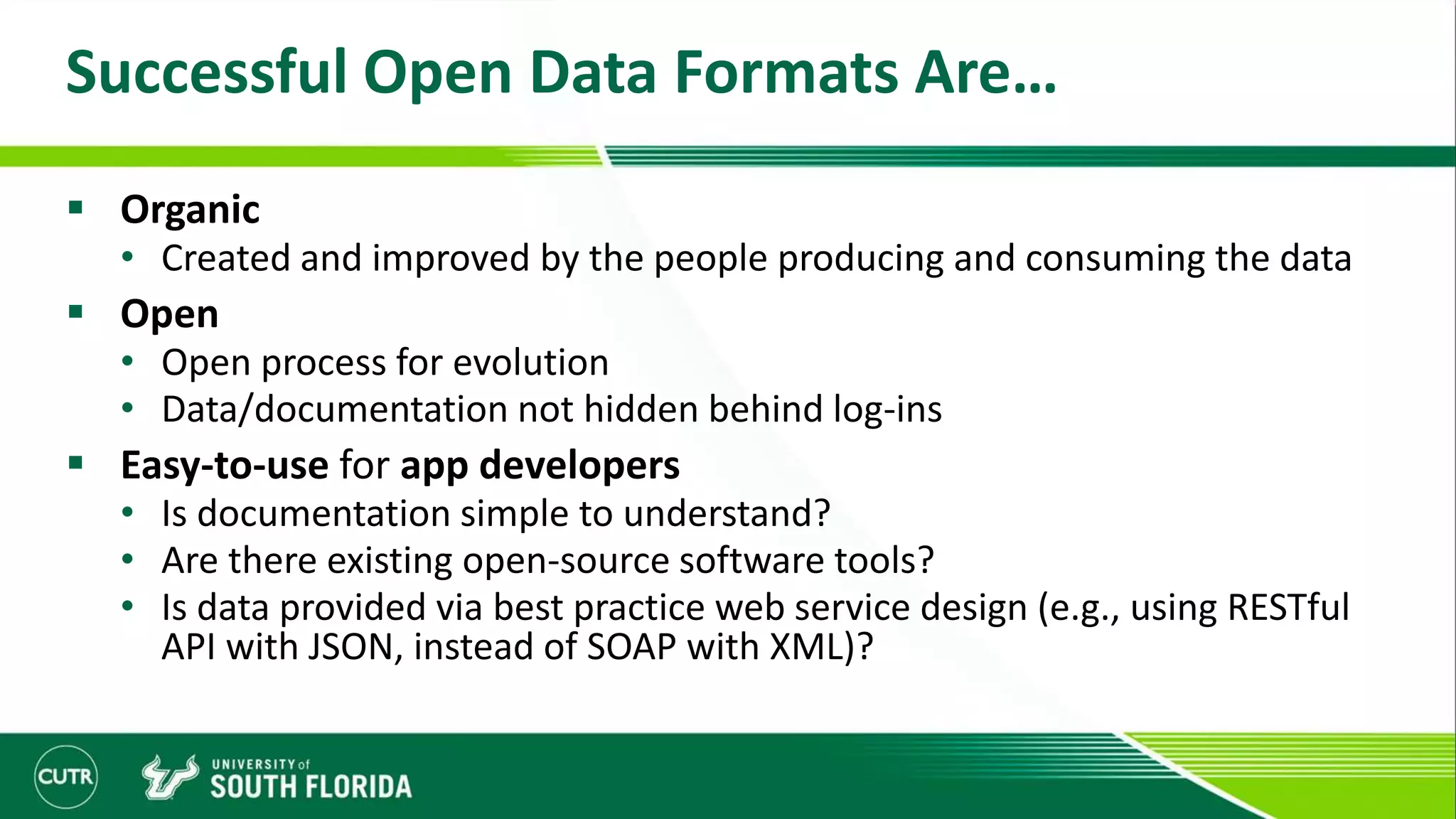
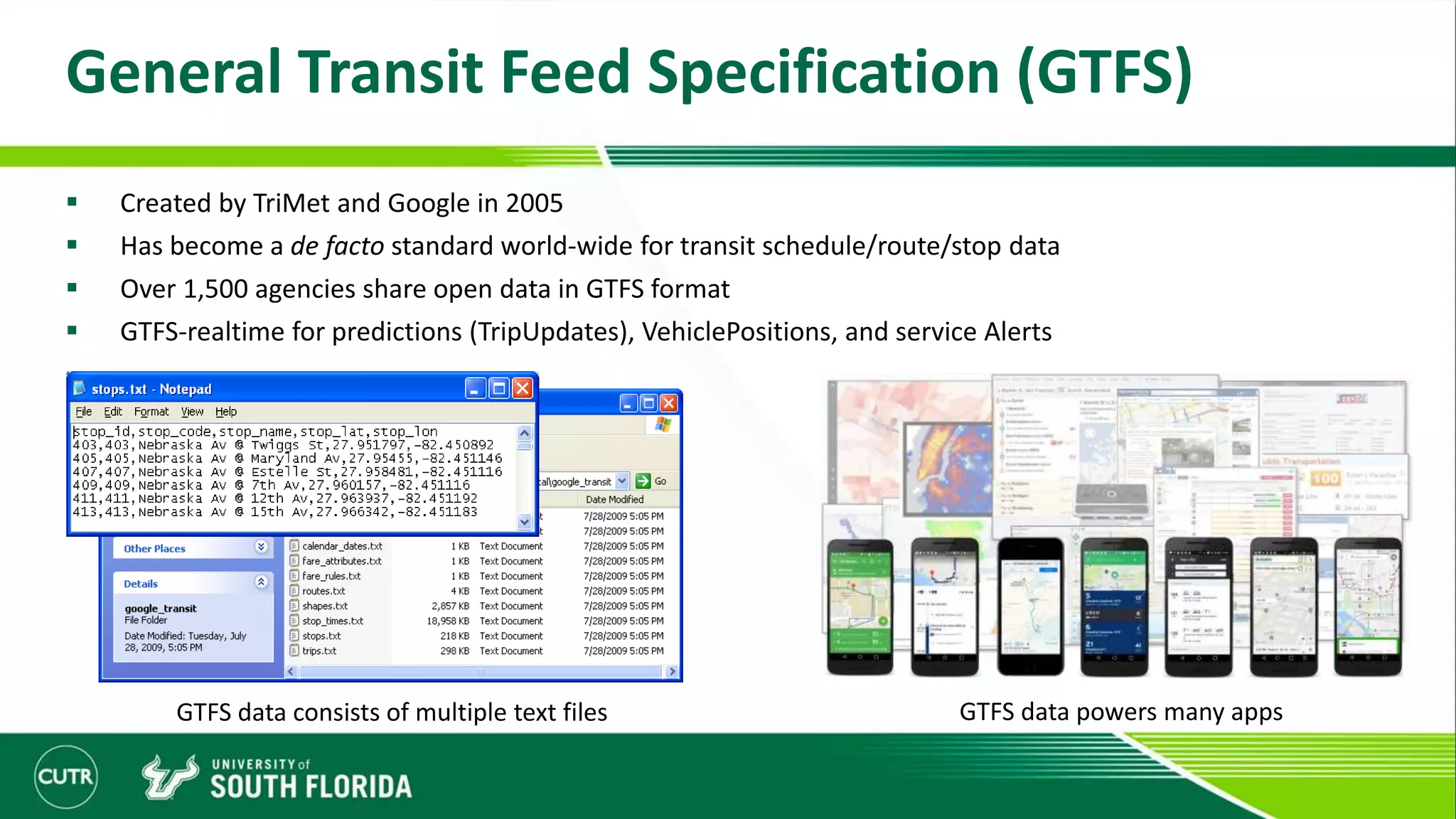
![Quality is important!
Any disconnect between agency data and app developers is
jarring to riders
In one study, 9% of riders said they took the bus less often
due to errors in real-time information[9]
Data errors and inconsistencies make analysis hard
Use GTFS and GTFS-realtime validators to catch errors:
• https://gtfs.org/testing/
[9] A. Gooze, K. Watkins, and A. Borning (2013), “Benefits of Real-Time Information and the Impacts of Data Accuracy on the Rider
Experience,” in Transportation Research Board 92nd Annual Meeting, Washington, D.C., January 13, 2013.](https://image.slidesharecdn.com/barbeau-n-cattwebinar-opentransitdata-v2-200528194119/75/Open-Transit-Data-A-Developer-s-Perspective-16-2048.jpg)
